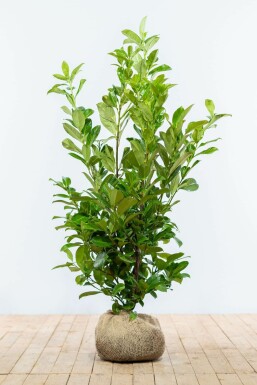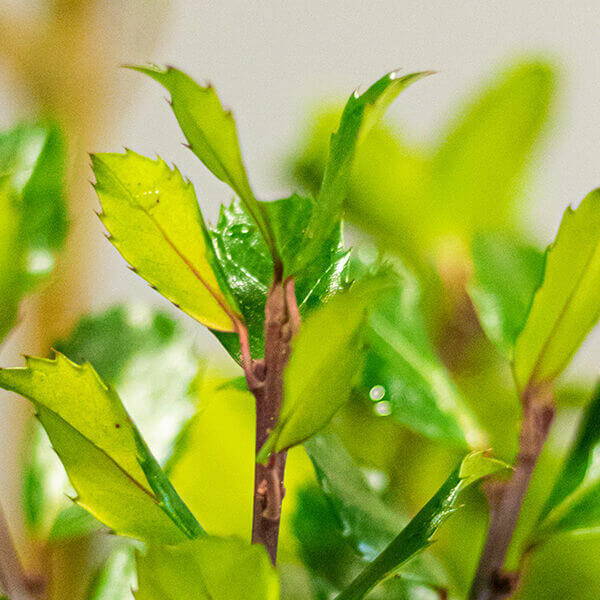Hedge Plants For Commercial Properties
Enhance your garden's appeal with lush hedge ranges such as Yew (Taxus), Thuja, Laurel, Photinia, and Bamboo, celebrated for their structural integrity and environmental advantages.
Yew and Thuja provide evergreen coverage and winter resilience, while Laurel offers quick development and broad, fragrant leaves.
Photinia adds seasonal beauty with its lively red foliage, and Bamboo provides a low-maintenance, serene ambiance.
These hedges enhance air quality, minimize noise, and create tranquil, personal areas.
Appropriate planting, spacing, and maintenance make sure vigorous growth and eco-friendly consistency.
Explore how these lavish ranges can elevate your garden's beauty and wellness.
Key Takeaways
Transform Your Garden With Lush Hedge Varieties
- Select Yew for its dense, evergreen development and unrivaled longevity.
- Go with Laurel for its fast growth and broad leaves, making sure quick privacy.
- Pick Photinia for its dynamic seasonal foliage, which turns a striking dark red.
- Utilize Bamboo for a low-maintenance, winter-hardy hedge with visual appeal.
- Space plants 2-3 per meter and prune frequently for ideal development and health.
Popular Hedge Plants
When transforming a garden with lavish hedge varieties, it's vital to think about popular hedge plants such as Yew, Thuja, Laurel, and Photinia due to their unique qualities and benefits.
Yew (Taxus) is highly respected for its longevity and thick, green development, making it a prime choice for sustaining landscapes.
Thuja is noted for its evergreen foliage and robust winter season resilience.
Photinia adds seasonal vibrancy with red leaves that darken with time, creating vibrant visual appeal.
Laurel uses rapid development and aromatic, broad leaves, ideal for quick personal privacy.
Additionally, Bamboo is an exceptional choice for ambiance, providing a low-maintenance, winter-hardy alternative that enhances the garden's aesthetic with its sophisticated, swaying walking canes.
These selections accommodate a range of horticultural requirements and preferences.
Benefits of Garden Hedges
Garden hedges provide a plethora of benefits, making them a valuable addition to any landscape. These natural barriers are cost-effective to execute and provide considerable wind defense, boosting air circulation and contributing to noise reduction. The dense foliage of hedges like Thuja and Beech guarantees personal privacy by blocking exposure, producing a tranquil and remote environment.
Hedges likewise play a crucial function in microclimate guideline, supplying a stable environment that fosters plant growth and lessens temperature fluctuations. Their elaborate leaf structures filter toxins, enhancing air quality and contributing to a much healthier garden community.
Additionally, hedges master sound decrease, taking in and deflecting sound waves to lower ambient sound levels. This dual performance of supplying both visual and acoustic privacy boosts the overall harmony and aesthetic appeal of any garden.
Planting and Upkeep Tips
For a successful hedge, careful preparation of the planting area is vital. Ensure the soil has appropriate pH and drain to support strong root development.
Space the plants properly for the chosen species. Water the hedge often throughout its initial development phase, adjusting as required with seasonal modifications.
Implement a methodical insect control and illness avoidance strategy, using natural or chemical treatments when required. Frequently examine for aphids, termites, and fungal infections.
Apply mulch to maintain moisture and suppress weeds. Seasonal pruning promotes dense growth and air flow, necessary for plant health.
Following these standards will assist you cultivate a vibrant, well-kept hedge that boosts the appeal of your garden.
Spacing and Cutting Standards
Spacing and Cutting Standards
Proper spacing and trimming are crucial for cultivating healthy, aesthetically appealing hedges. Appropriate spacing makes sure each plant gets enough nutrients, light, and air flow.
Follow these standards for optimum hedge upkeep:
- Spacing: Position hedge plants 2-3 plants per meter to motivate robust growth.
- Pruning Techniques: Regular pruning is vital for preserving preferred hedge height and shape. Trim new development in summer and cut back older wood throughout winter season.
- Seasonal Care: Change trimming approaches and schedules according to seasonal requirements to make sure plant health.
- Hedge Height: Frequently screen and trim to maintain the desired hedge height and attain consistent looks.
Sticking to these steps will ensure your hedge grows, enhancing both the appeal and functionality of your garden.
Selecting the Right Hedge
Choosing the Right Hedge
Picking the suitable hedge involves examining elements such as mature height, foliage density, and ecological durability. Successful hedge plant choice requires understanding each types' growth attributes and site-specific versatility.
For example, Yew (Taxus) provides excellent durability and dense development, while Thuja is noteworthy for its winter Additional resources season durability. In addition, considering maintenance requirements is vital; fast-growing species like Laurel or Privet need regular cutting, whereas low-maintenance options like Bamboo or Ivy may be more suitable for those looking for minimal maintenance.
Environmental elements such as soil type, light schedule, and moisture conditions need to also assist the choice procedure. This mindful method ensures the selected hedges will grow, offering both visual and functional benefits to the garden landscape.
Shipment and Planting Recommendations
To ensure your hedge plants prosper, they should be delivered by specialized carriers and planted quickly upon arrival.
Follow these necessary steps for effective planting:
- Soil Preparation: Enrich the soil with organic matter to enhance drain and nutrient material.
- Planting Depth: Create a trench twice the width and equivalent to the depth of the root ball.
- Watering Strategies: Water completely after planting, keeping the soil consistently moist but not filled.
- Mulching: Use a layer of mulch to maintain wetness and reduce weeds.
Customer Assistance and Service
Provided the crucial role of timely assistance in horticultural pursuits, our client support group is available 6 days a week through telephone, email, and social networks to provide skilled recommendations and swiftly attend to any concerns. Their commitment to fast response times makes sure customer fulfillment by dealing with questions related to plant health, optimum planting methods, and maintenance schedules.

-------------------
Within 24 hours
This extensive support group, enhanced by an outstanding 9.3/ 10 customer ranking, highlights our dedication to boosting the gardening experience for every client.
Often Asked Concerns
How Long Does It Take for Hedge Plants to Establish?
Hedge plants typically require one to three years to become completely established, with the specific period varying by species and growing conditions.
Effective care throughout this vital period is necessary for robust growth. Consistent watering, watchful weed control, and suitable fertilizer application are pivotal in promoting strong root development.
For example, fast-growing species like Laurel might establish quicker, while slower-growing ranges such as Yew may take longer. Persistent maintenance accelerates the facility process, leading to healthy and dense hedges.
What Are the very best Hedge Plants for Privacy?
The question of the very best hedge plants for privacy involves examining evergreen and deciduous options.
Evergreen hedges like Thuja, Laurel, and Cypress supply year-round protection, ensuring continuous personal privacy.
On the other hand, deciduous hedges such as Beech use seasonal personal privacy, shedding leaves in cooler months.
Key maintenance pointers for personal privacy hedges include routine cutting, fertilizing in spring, and correct spacing-- typically 2 to 3 plants per meter.
Additionally, consistent watering and persistent weed elimination are vital for promoting healthy, thick development.
Can Hedge Plants Attract Wildlife to My Garden?
Yes, hedge plants can attract wildlife to your garden by offering important advantages like shelter, food, and nesting websites, consequently improving regional biodiversity. Yew, holly, and laurel are excellent for attracting birds, while ivy supports a variety of insects.
However, it is very important to note that there are some disadvantages, such as increased maintenance to manage pests and regular upkeep. Thoroughly picking and keeping hedge ranges can assist stabilize these advantages and downsides, eventually cultivating a lively and sustainable environment in your garden.
Exist Any Flowering Hedge Plants Available?
Yes, there are flowering hedge plants available that can enhance the appeal of your garden.
For instance, Elaeagnus, likewise known as Olive Willow, produces fragrant white flowers in the fall, adding a touch of beauty.
Photinia, another popular choice, showcases vibrant red leaves that grow into an abundant green, producing a dynamic visual effect throughout the seasons.
To ensure these plants grow, it's vital to practice appropriate pruning techniques and seasonal upkeep, such as cutting new growth in the summer season and cutting down in the winter.
These procedures will assist maintain the health and visual appeal of your flowering hedges.
How Do I Prevent Bugs in My Hedge Plants?
To prevent pests in hedge plants, utilize natural pest control approaches and preserve proper hedge care. Present helpful bugs like ladybugs, which prey on damaging insects, to develop a well balanced ecosystem.
Frequently inspect your hedges for indications of invasion and quickly remove any afflicted parts to avoid the spread. Guarantee the health of your hedges by applying well balanced fertilizers and providing appropriate water.
Utilize mulching to maintain soil moisture and correct spacing to decrease plant tension and promote robust growth. These practices jointly assist in lessening bug problems and preserving a healthy hedge.
Conclusion
In essence, choosing the best hedge ranges such as Yew, Thuja, and Laurel can transform any garden into a serene haven. These plants offer year-round plant, improve visual appeal, and offer practical advantages like noise reduction and wind defense.
Proper planting methods, precise spacing, consistent watering, and seasonal trimming are crucial for optimal growth.
Dependable shipment services and expert customer assistance make sure a seamless experience from purchase to planting, making it simpler than ever to raise your outside area.
Garden hedges offer a wide variety of advantages, making them a valuable addition to any landscape. These natural barriers are affordable to execute and supply significant wind protection, improving air blood circulation and contributing to noise reduction. The dense foliage of hedges like Thuja and Beech guarantees personal privacy by blocking presence, creating a serene and secluded environment.

Pruning Strategies: Routine pruning is vital for preserving preferred hedge height and shape. Trim new development in summertime and cut back older wood during winter.